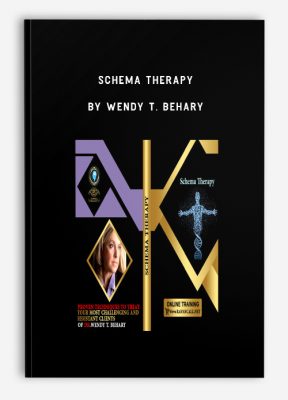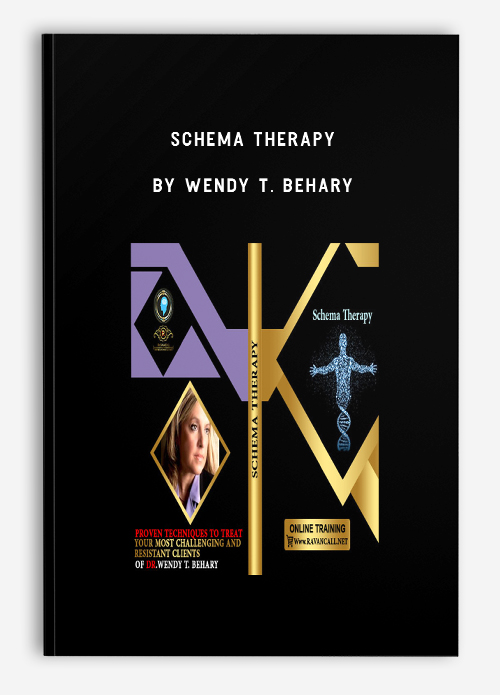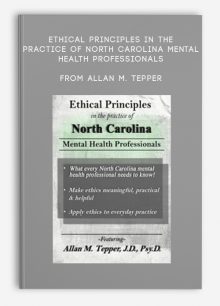Schema Therapy: Proven Techniques to Treat Your Most Challenging and Resistant Clients by Wendy T. Behary
$239.99 $71.00

Schema Therapy: Proven Techniques to Treat Your Most Challenging and Resistant Clients by Wendy T. Behary
**More information:
Get Schema Therapy: Proven Techniques to Treat Your Most Challenging and Resistant Clients at Salaedu.com
Description
Do you have clients who are stuck – struggling with personality disorders and other chronic psychological challenges despite months or even years in treatment?
The lack of progress is extremely frustrating to both you and your clients!
Schema Therapy is a highly effective, evidence-based therapeutic approach that will expand your treatment toolbox and finally move even your most challenging and resistant clients forward.
As an expansion of traditional cognitive behavioral therapy, schema therapy integrates attachment theory, psychodynamic concepts, and emotion-focused therapies to help clients transform their negative thoughts and reactions into new, positive behaviors.
Join Wendy Behary, MSW, LCSW, founder and director of The Cognitive Therapy Center of New Jersey and The New Jersey Institute for Schema Therapy, for a new intensive online course on the active, systematic, flexible, and depth-oriented schema approach.
You’ll fully understand how to implement schema therapy into your practice! Through expert guidance and in-depth instruction, plus demonstrations of master schema therapists, you’ll learn assessment and change strategies that will revolutionize your outcomes.
| Schema therapy is particularly well suited for difficult, resistant clients with entrenched, chronic psychological challenges, including personality disorders (such as BPD and Narcissism), eating disorders, intractable relationship problems, and criminal offenders. It is also effective for relapse prevention in depression, anxiety, and substance abuse.
In this in-depth online course, Wendy Behary will guide you step-by-step through the schema approach to fully prepare you for implementation in your practice. |
| Here’s a summary of the clinical training:
Schema Theory
You’ll learn to implement Schema Inventories for patient assessment:
Through advanced demonstrations and case conceptualizations, you’ll learn to apply a variety of emotion-focused, cognitive, and behavioral strategies to break self-defeating patterns including:
You’ll practice specific schema mode profiles, including the anger modes, and learn to effectively bypass “detached protector” modes to access necessary emotions for healing and change. Therapist schema activation and self-regulation strategies for maintaining a sturdy, genuine, and healthy adult mode and model are also incorporated into this intensive training!
About Wendy Behary, MSW, LCSW: Wendy T. Behary, MSW, LCSW, is the founder and director of The Cognitive Therapy Center of New Jersey and The New Jersey Institute for Schema Therapy. She has been treating clients, training professionals and supervising psychotherapists for more than 20 years. Wendy was on the faculty of the Cognitive Therapy Center and Schema Therapy Institute of New York (until merging in 2012 with the NJ Institute), where she trained and worked with Dr. Jeffrey Young since 1989. She is a distinguished founding fellow and consulting supervisor for The Academy of Cognitive Therapy (Aaron T. Beck Institute). Wendy served as the president of the Executive Board of the International Society of Schema Therapy (ISST) from 2010-2014, and is currently the chair of the Brainstorming Sub-Committee for the ISST. She also serves on the Board of Directors for the Personality Disorders Awareness Network (PDAN). Wendy Behary has co-authored several chapters and articles on Schema Therapy and Cognitive Therapy. She is the author of Disarming the Narcissist…Surviving and Thriving with the Self-Absorbed (New Harbinger, 2008 and 2013). She lectures both nationally and internationally to professional and general audiences on schema therapy, and the subject of narcissism, relationships, and dealing with difficult people. |
More information about Medical:
Medicine is the science and practice of establishing the diagnosis, prognosis, treatment, and prevention of disease.
Medicine encompasses a variety of health care practices evolved to maintain and restore health by the prevention and treatment of illness.
Contemporary medicine applies biomedical sciences, biomedical research, genetics, and medical technology to diagnose, treat, and prevent injury and disease,
typically through pharmaceuticals or surgery, but also through therapies as diverse as psychotherapy, external splints and traction, medical devices, biologics, and ionizing radiation, amongst others.
Medicine has been around for thousands of years, during most of which it was an art (an area of skill and knowledge) frequently having connections to the religious and
philosophical beliefs of local culture. For example, a medicine man would apply herbs and say prayers for healing, or an ancient philosopher and physician would apply bloodletting according to the theories of humorism.
In recent centuries, since the advent of modern science, most medicine has become a combination of art and science (both basic and applied, under the umbrella of medical science).
While stitching technique for sutures is an art learned through practice, the knowledge of what happens at the cellular and molecular level in the tissues being stitched arises through science.
1 review for Schema Therapy: Proven Techniques to Treat Your Most Challenging and Resistant Clients by Wendy T. Behary
Add a review Cancel reply
Related products
HEALTH - FITNESS - LIFESTYLE - MEDICAL
HEALTH - FITNESS - LIFESTYLE - MEDICAL
HEALTH - FITNESS - LIFESTYLE - MEDICAL
HEALTH - FITNESS - LIFESTYLE - MEDICAL
HEALTH - FITNESS - LIFESTYLE - MEDICAL
HEALTH - FITNESS - LIFESTYLE - MEDICAL
HEALTH - FITNESS - LIFESTYLE - MEDICAL
Fitness Mentors – Audio Lectures, Practice Tests and Study Guide for the NASM CPT Ex










Trevis Trevis –
We create this shop with the mission: Bring the courses to 500 millions of people in the world, to help them awake their power and change their